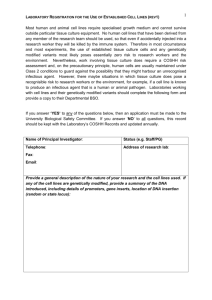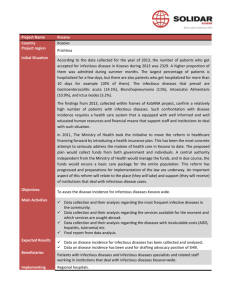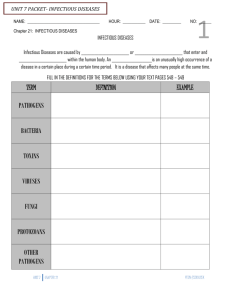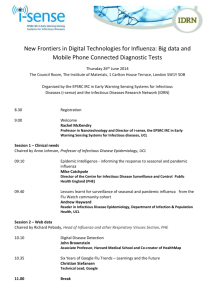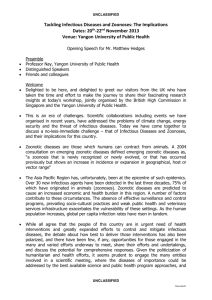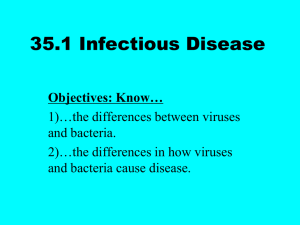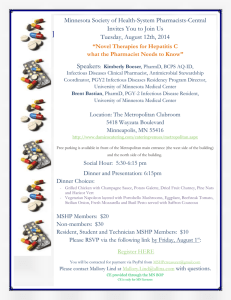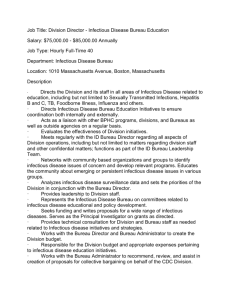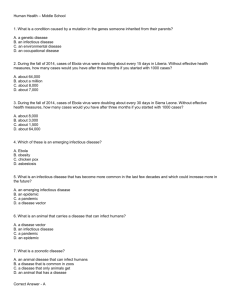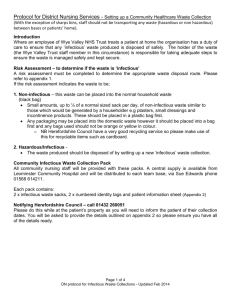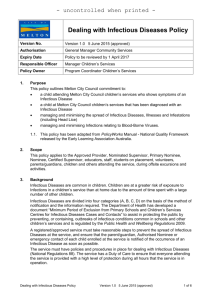activity 5.1.2 infectious agent chart
advertisement
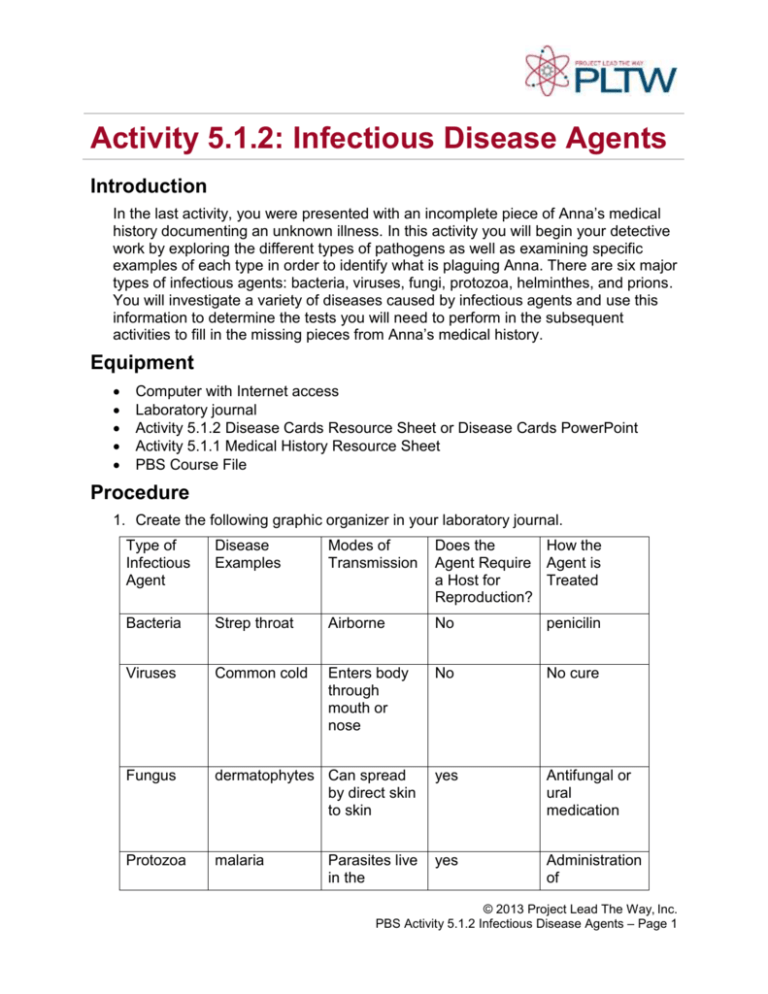
Activity 5.1.2: Infectious Disease Agents Introduction In the last activity, you were presented with an incomplete piece of Anna’s medical history documenting an unknown illness. In this activity you will begin your detective work by exploring the different types of pathogens as well as examining specific examples of each type in order to identify what is plaguing Anna. There are six major types of infectious agents: bacteria, viruses, fungi, protozoa, helminthes, and prions. You will investigate a variety of diseases caused by infectious agents and use this information to determine the tests you will need to perform in the subsequent activities to fill in the missing pieces from Anna’s medical history. Equipment Computer with Internet access Laboratory journal Activity 5.1.2 Disease Cards Resource Sheet or Disease Cards PowerPoint Activity 5.1.1 Medical History Resource Sheet PBS Course File Procedure 1. Create the following graphic organizer in your laboratory journal. Type of Infectious Agent Disease Examples Modes of Transmission Does the How the Agent Require Agent is a Host for Treated Reproduction? Bacteria Strep throat Airborne No penicilin Viruses Common cold Enters body through mouth or nose No No cure Fungus dermatophytes Can spread by direct skin to skin yes Antifungal or ural medication Protozoa malaria yes Administration of Parasites live in the © 2013 Project Lead The Way, Inc. PBS Activity 5.1.2 Infectious Disease Agents – Page 1 intestines medications specific to giadaiia infection Helminthes Tape worm Must come in contact soil mixed with human feces Prions Caused by an No abnormal verisone of a kind of protein CJD prion yes Administration of anti parasite medication No effective treatment 2. Work with a partner and read through each Disease Card (either on the resource sheet or on the presentation). As you read, highlight key information on each disease. 3. Note any similarities between the diseases caused by the same type of infectious agent. Based on this, fill in your graphic organizer. 4. If necessary, use the Internet to research the six types of infectious agents and fill in any missing information in your graphic organizer. 5. Answer the Conclusion questions. Conclusion 1. Why is it useful for epidemiologists, scientists who study disease, to categorize diseases based on different factors, such as modes of transmission? 2. Based on what you know about the six types of infectious agents, what type of agent do you think was plaguing Anna? Explain your reasoning. 3. How would the infection simulation you performed in the last activity have been different if you had performed it for syphilis? What about for malaria? (Hint: Think about the transmission of these diseases.) © 2013 Project Lead The Way, Inc. PBS Activity 5.1.2 Infectious Disease Agents – Page 2 4. Using your completed graphic organizer, what can be done to prevent the transmission of each infectious agent? Bacteria: Viruses: Fungus: Protozoa: Helminthes: Prions: 5. What should your next steps be as medical detectives in order to fill in the missing pieces of Anna’s medical history? Refer to your Activity 5.1.1 Medical History Resource Sheet for ideas. © 2013 Project Lead The Way, Inc. PBS Activity 5.1.2 Infectious Disease Agents – Page 3


